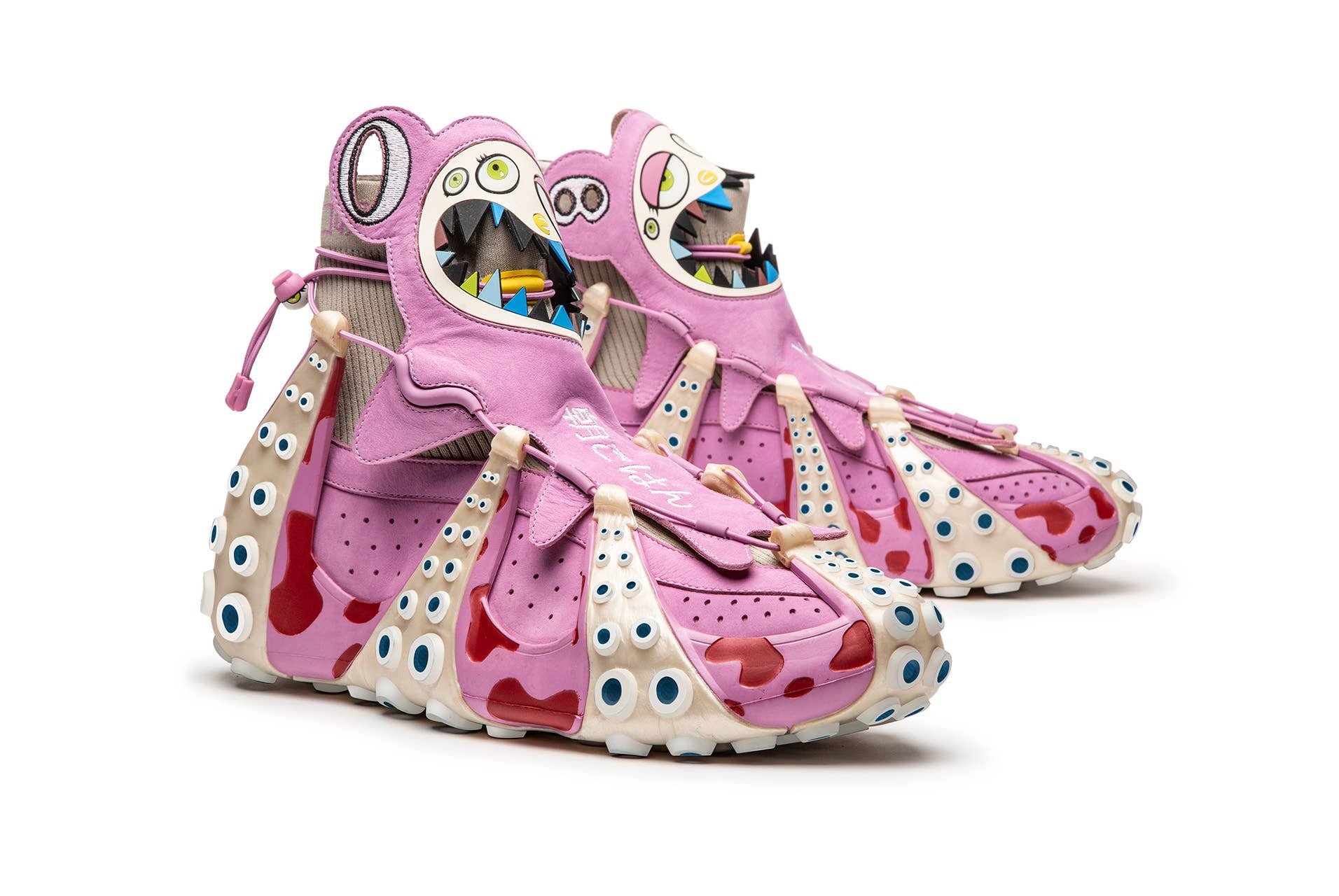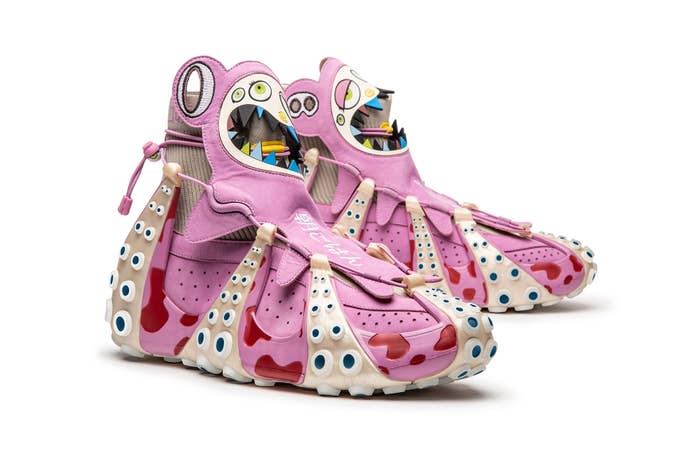
The Bata Shoe Museum in Toronto is preparing to launch its latest exhibition this week. Entitled Future Now: Virtual Sneakers to Cutting-Edge Kicks, the show will explore the frontiers of footwear through the 21st century and beyond—looking at everything from game-changing designs, new aesthetics, advances in accessibility and sustainability, to all-digital shoes that exist exclusively in the metaverse. It’s a fascinating, wide-ranging exhibition that covers innovations in 3D printing, reclaimed ocean plastics, virtual reality, and blockchain-supported NFTs.
Designed by the Arc + Co Design Collective and curated by Bata’s Director and Senior Curator Elizabeth Semmelhack (who also wrote 2019’s popular sneaker book Collab), “Future Now” opens in Toronto on May 26th, and will launch alongside Semmelhack’s new book Future Now to accompany the show. In advance of the exhibition and book release, Complex Canada caught up with Semmelhack to talk about sneaker history, sneaker NFTs, and how the past and the future of shoes go hand in hand.
It feels like a good time to be looking at sneakers this way because rather than strictly functional, we tend to look at sneakers as aesthetic objects, as artistic objects.
And also that sneakers have become collectible. If you think about the trajectory of footwear having an athletic function to having that function but being part of a wardrobe or expressing an identity, to sneakers that aren’t even being worn. That’s something that really connects to NFTs and digital sneakers. You can flex with them on your avatar in the metaverse, but a lot of people are collecting them as digital assets.
We’ve got sneakers as NFTs, as assets, and also sneakers as cosmetic items in video games. I have a pair of Jordans in NBA2K, the same pair I have in real life, that I paid real money for. How do those things relate?
It doesn’t surprise me that we’re seeing such forays of sneakers into the metaverse realm. There’s a blurring between real life and the metaverse. You’re dressing your avatar, but what’s fascinating is you’re trying to dress that avatar in the same clothes that you own in real life. If you think about the Jordan drop in Fortnite, or footwear you see in Madden or 2K, it’s incredibly similar. It’s interesting that we’re bringing these things into the metaverse, a place that doesn’t require a 1:1 correspondence with our world. But fashion is anything but frivolous.
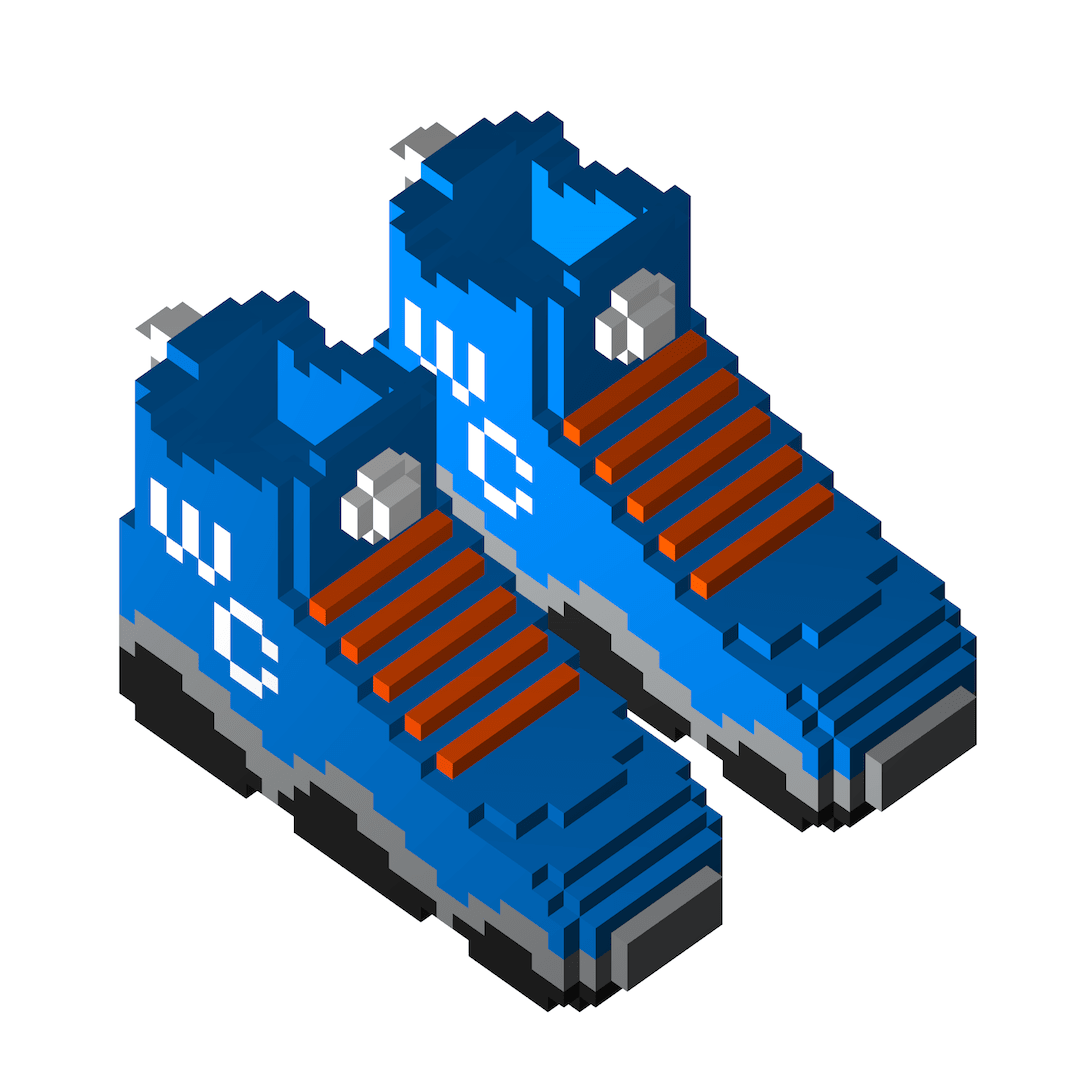
What do you see on the horizon for sneakers in the digital space?
Truly, what footwear can be in the metaverse is really where there is a huge opportunity for imagining things that don’t exist. In the metaverse, you don’t need shoes to do anything for you. Just think of what can happen if we continue to move forward with fashion in the metaverse. The sky is the limit.
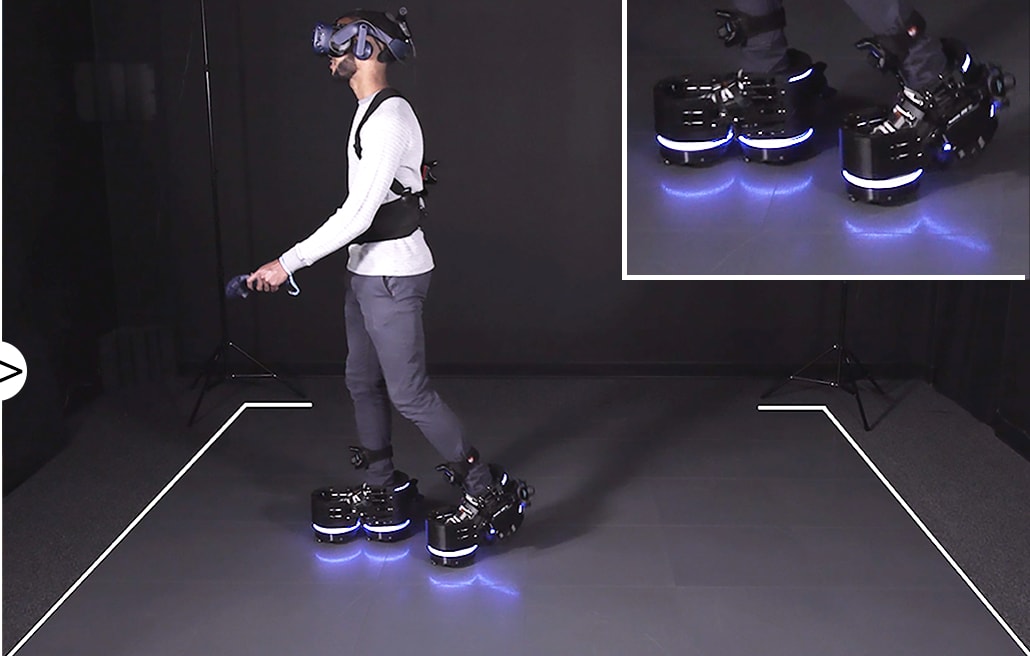
When you look at innovations in sneakers, there are certain things that feel like novelties, like the self lacing Air Mags. But then there are also innovations that are really more about accessibility, right? Like the Go FlyEase?
Yeah, absolutely. Looking at greater inclusion. That’s definitely what the Go FlyEase is doing.
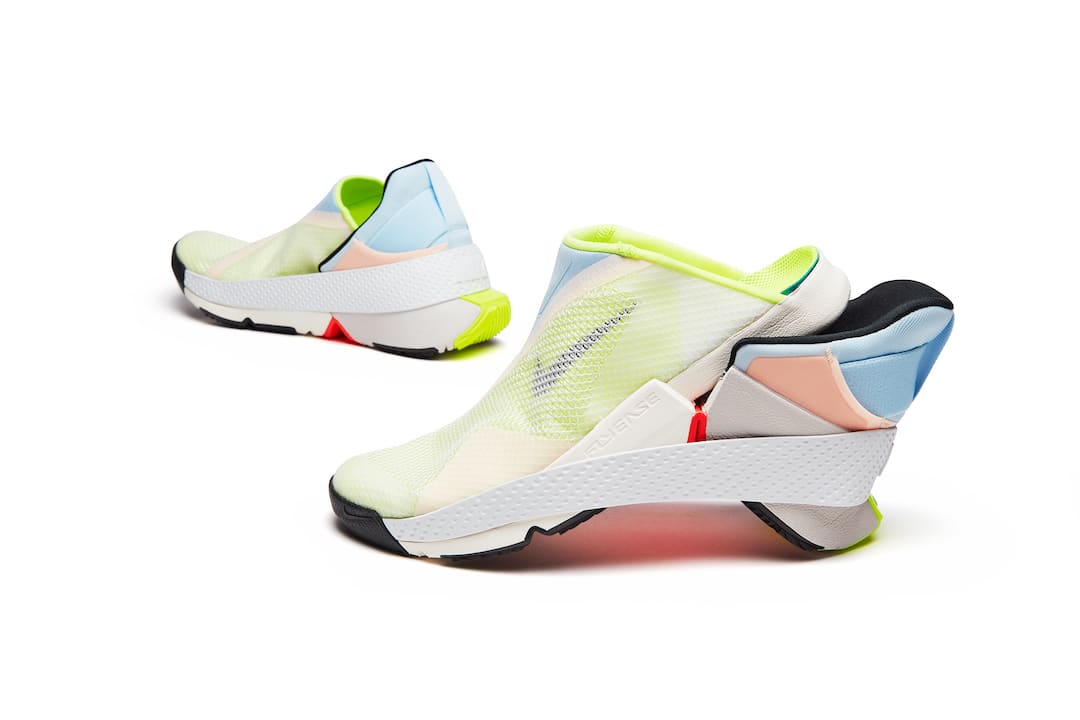
So what is the relationship between these advancements that are just about novelty and those that are more about accessibility or have some purpose?
It’s an interesting question. For instance, I have the Yeezy Foam Rnnr in the innovation section. But part of their innovation isn’t just the way that they look, or the fact that they’re a singular foam-based structure. It’s the fact that it’s made from algae, which very clearly intersects with sustainability. So oftentimes innovation is driven by these other issues that are also explored in the exhibition and book. Or for example, with 3D printing, you’re building something up rather than paring something away to reveal it, so that reduces waste.
But is something like using 3D printing to reduce waste the point, or is it more a side effect of implementing these processes?
It’s a complicated answer. I think sometimes the problem, or the nut that you want to crack, might be sustainability, which can lead to innovation that is so innovative that it transforms the business. Knitting is a perfect example. One of the problems with manufacturing shoes out of leather is that you have to take a cow hide, which is basically the equivalent of a rolled out piece of dough, and then you take a cookie cutter, a sole cutter, to cut out the pieces needed for the fabrication of the shoe. Like when you make cookies, you have lots and lots of leftover bits — but you can’t take those pieces and massage them together to make another batch. You have an incredible amount of waste. With knitting, you have the thread, you cut the thread, there’s no waste. But knitting wasn’t implemented just to reduce waste. It was about creating something movable and breathable that can fit different sizes of foot.
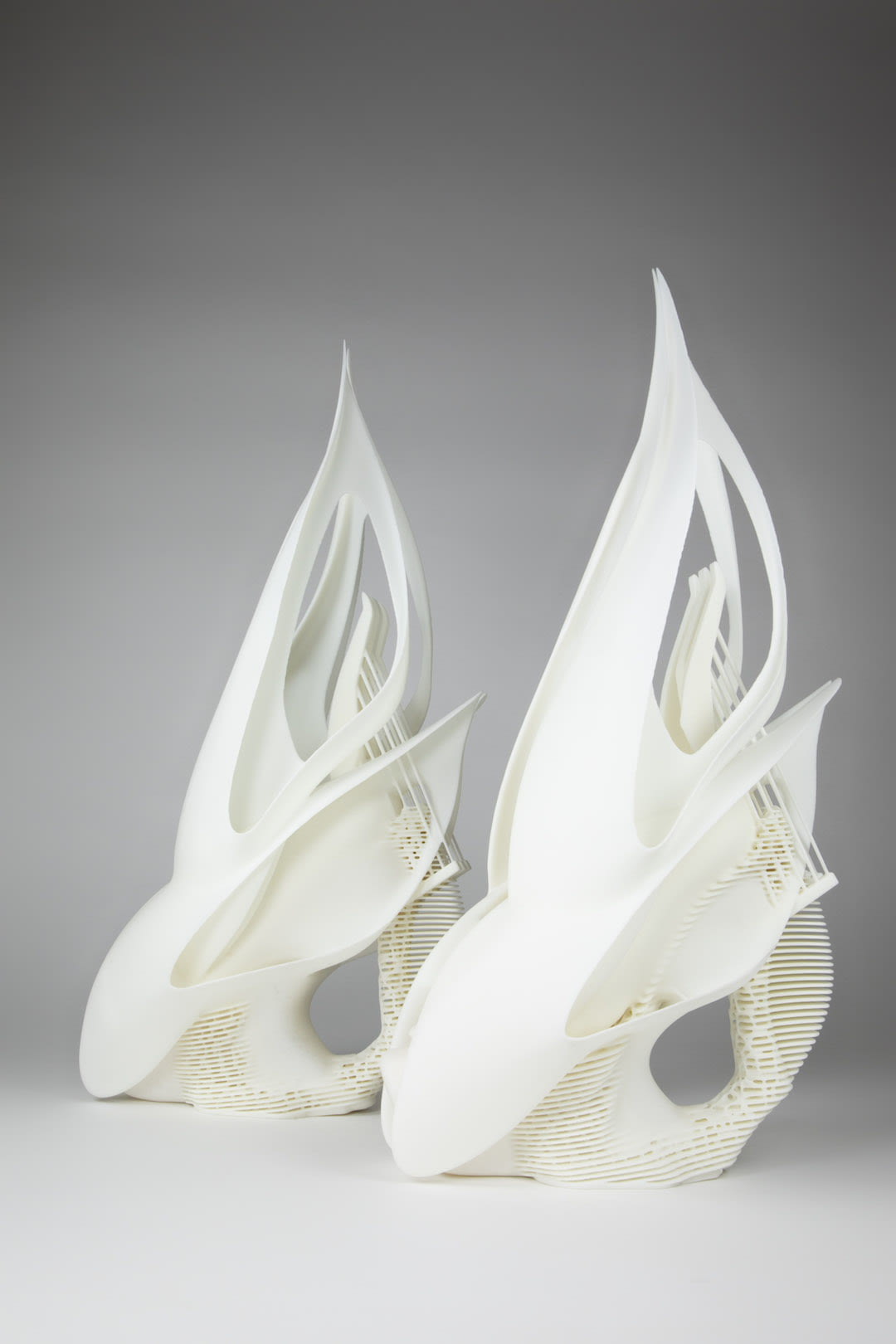
It seems like if you’re a shoe manufacturer, there may be some incentive to make something more socially responsible. But reducing waste surely must also be good for their bottom line.
Yeah, 100 percent. Absolutely. They don’t have to deal with waste. There are innovations that come out of concern for social responsibility, but also the bottom line.
Sneaker culture is pretty focused on history—where the shoes come from, what they mean, and so on. Your show is focused on the future. How does the future relate to the past in terms of sneakers, for you?
When an artist goes to work on an Air Force One, it’s not a blank canvas. The Air Force One brings with it already a huge amount of social meaning and history. So it’s true that those embedded in sneaker culture are very invested in history. They have a thorough understanding and understand the references invoked in a new colorway or a collaboration. But across the history of sneakers, we are always embracing new technology. The Pump. The air bubble. So I think sneakerheads are as interested in history as they are in the next step. An exhibition like this is about figuring out how the future is being shaped, and hopefully that will be of interest because history is being made as we speak.

